Iron Age Discoveries on the Upton A38 Roundabout Scheme
- 20th December 2021
An Iron Age enclosure dating from about 2,250 years ago has recently been excavated by our archaeologists. We have excavated many Iron Age settlements over the years, but this one differs from other sites we’ve worked on. The location is on the site of a new roundabout being constructed by Worcestershire County Council at the A38 junction for Upton.
How did we know the site was there?
As part of the planning process the impact of the new roundabout on the historic environment had to be investigated.
The potential for archaeology on the site was originally identified through aerial photographs which showed cropmarks indicating the presence of a large ditch defining a rectangular enclosure of unknown date on farmland by the A38. When the roundabout scheme was being planned, further information was collected to help better understand what the nature and date of this enclosure was. A geophysical survey in October 2020 more clearly defined the enclosure and revealed other probable archaeological features within the area. Trial trenching followed and revealed that the ditch defining the enclosure was very substantial and that other features were present. Finds including pottery indicated that the site was that of a Middle Iron Age settlement, albeit with an unusually large, ditched enclosure at its heart.
As a result of this preliminary information, full excavation of the area was undertaken in August and September 2021. This covered those parts of the site which would be disturbed during construction of the new roundabout. Excavation of such sites in advance of construction means that they can be recorded by archaeologists, thereby advancing our knowledge of the past, and the information and finds can be fully recorded and available for people to access in the future.
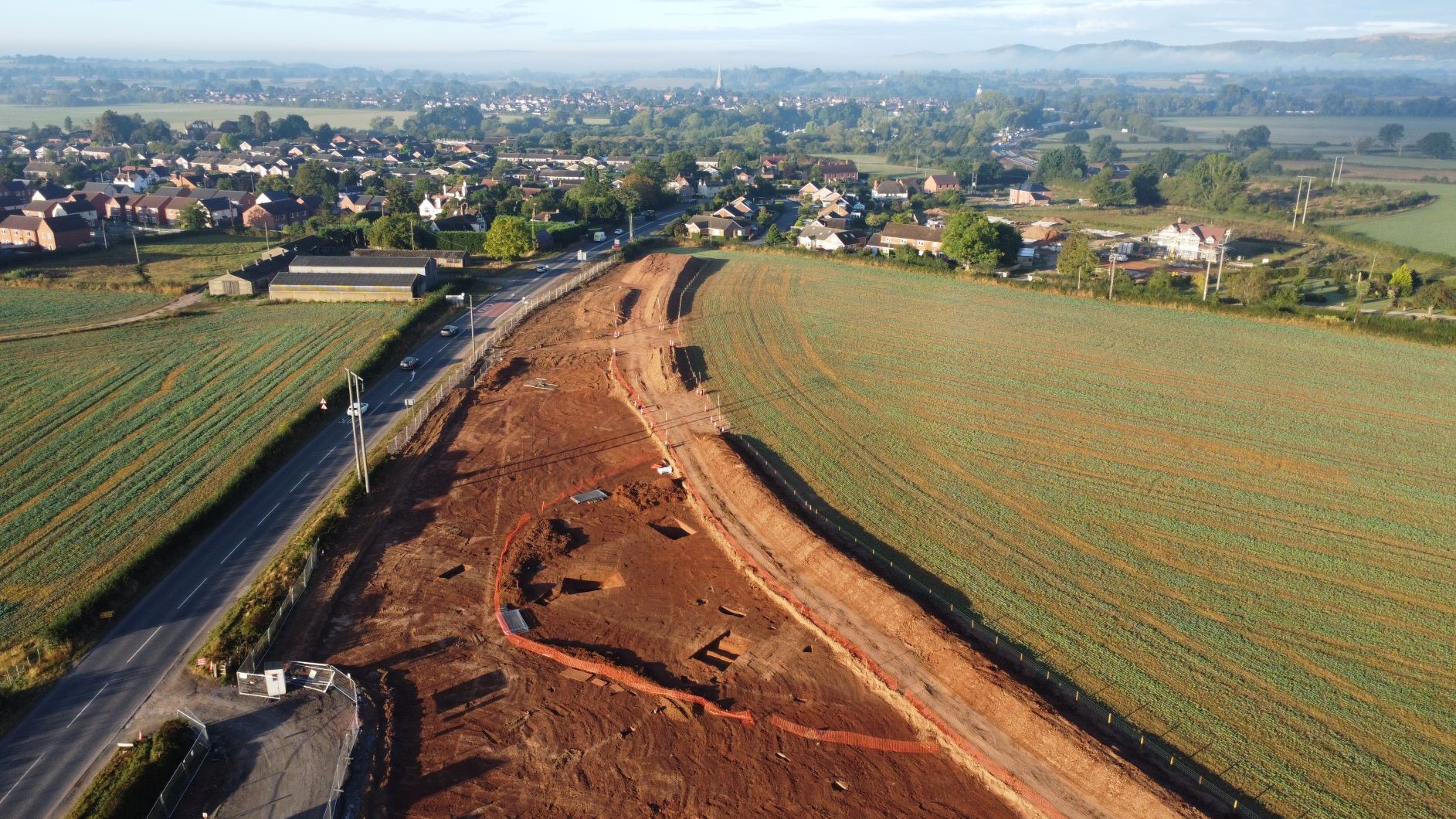
Enclosure with Malvern Hills in background
What did we find?
The excavation revealed that the ditch defining the enclosure was exceptionally large, in places being over 5m across and about 2m deep. A gap in the ditch on its east side provided an entrance to the enclosure and this had large posts set to either side indicative of a substantial gateway. Further posts and pits provided evidence of structures and other activity inside the enclosure whilst outside it we found a waterhole, a smaller enclosure and field boundaries. Unexpectedly an infant burial was also discovered in one of the ditches. Pottery confirmed that the site dated to the Middle Iron Age indicating that it had been occupied sometime between 300 and 100 BC.
As we only excavated the area to be disturbed by constructing the roundabout, we have only revealed about a third of the enclosure so further structures and possibly another entrance may lay within the unexcavated part which lies preserved beneath the farmland to the south.
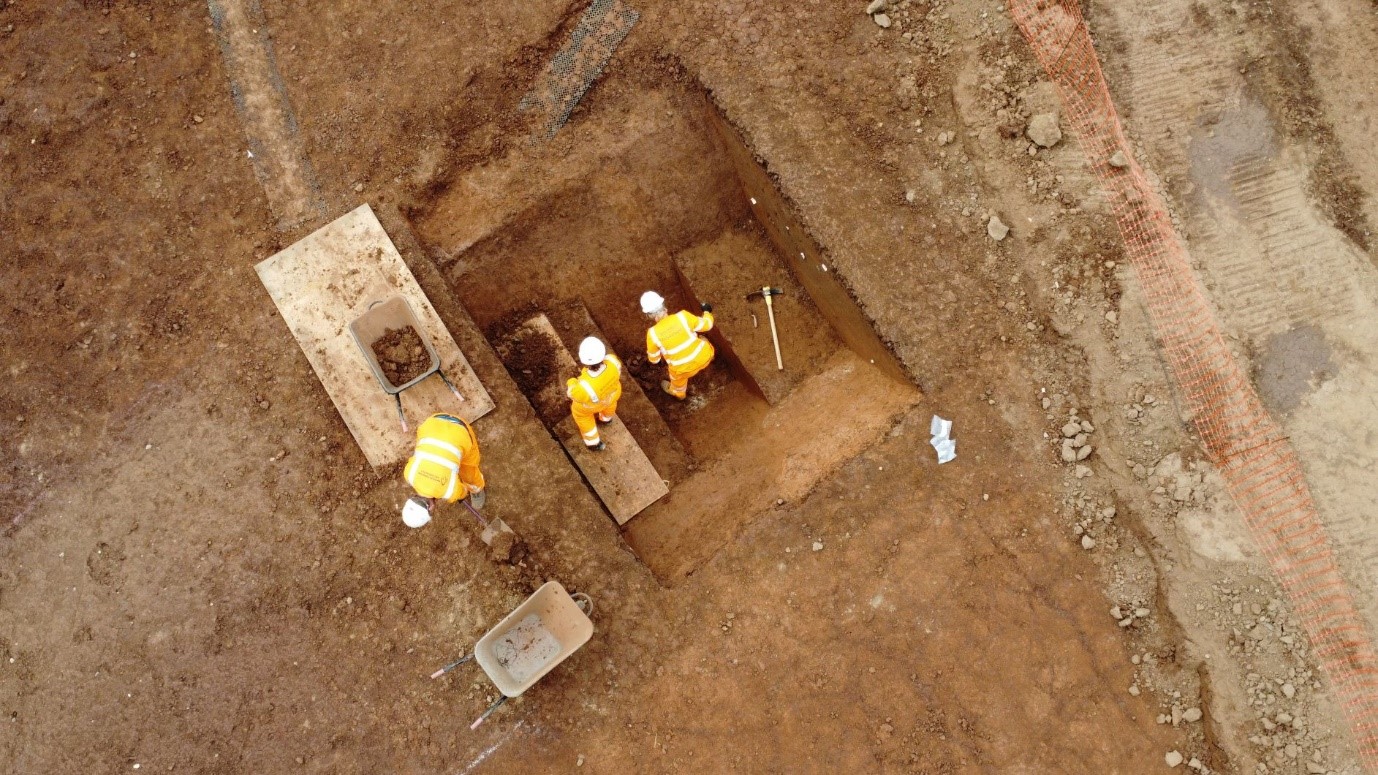
Overhead shot of ditch excavation
What does the site tell us about Iron Age Worcestershire?
Initial impressions are that this may not be an entirely typical Iron Age settlement. Excavation on site is only one part of the work and we’ll we analysing these discoveries, with input from our Finds Archaeologists, and the final report completed sometime next year. So there may be more to emerge.
The site is located on a low rise on the Severn floodplain with clear views to the south, west and east. This location, along with the size of the enclosure ditch and a well-defined gateway, suggests that the enclosure as well as being occupied by a small community may also have had a more important and potentially defensive function. This possibility is strengthened by the location of the site approximately midway between the hillfort of Bredon Hill, to the east, and two hillforts, Midsummer Hill and British Camp, on the Malverns to the west. One possibility we are exploring is that this well-defended site may been part of the system the leaders of the local Iron Age tribe, the Dobunni, used to ensure that they maintained control over the region and expressed their power and status. We know that parts of the Severn Valley were producing large quantities of grain at this time since just to the north of the roundabout site, excavations at Clifton in advance of quarrying have revealed the remains of over a hundred grain storage structures and pits. The Upton roundabout enclosure may therefore have helped to protect and control distribution of the highly important and valuable cereal harvests stored at sites in this part of the Severn Valley.
We’ll share more about this site in the new year.
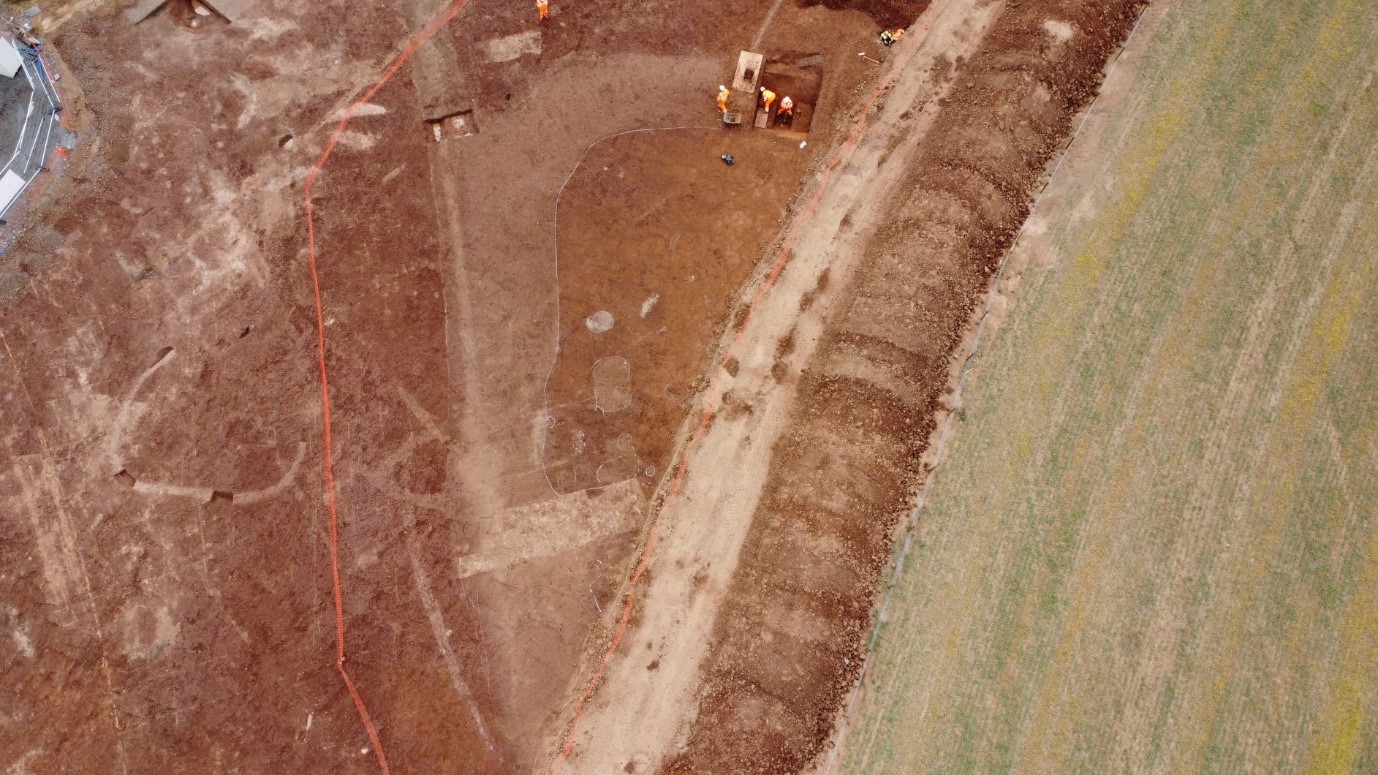
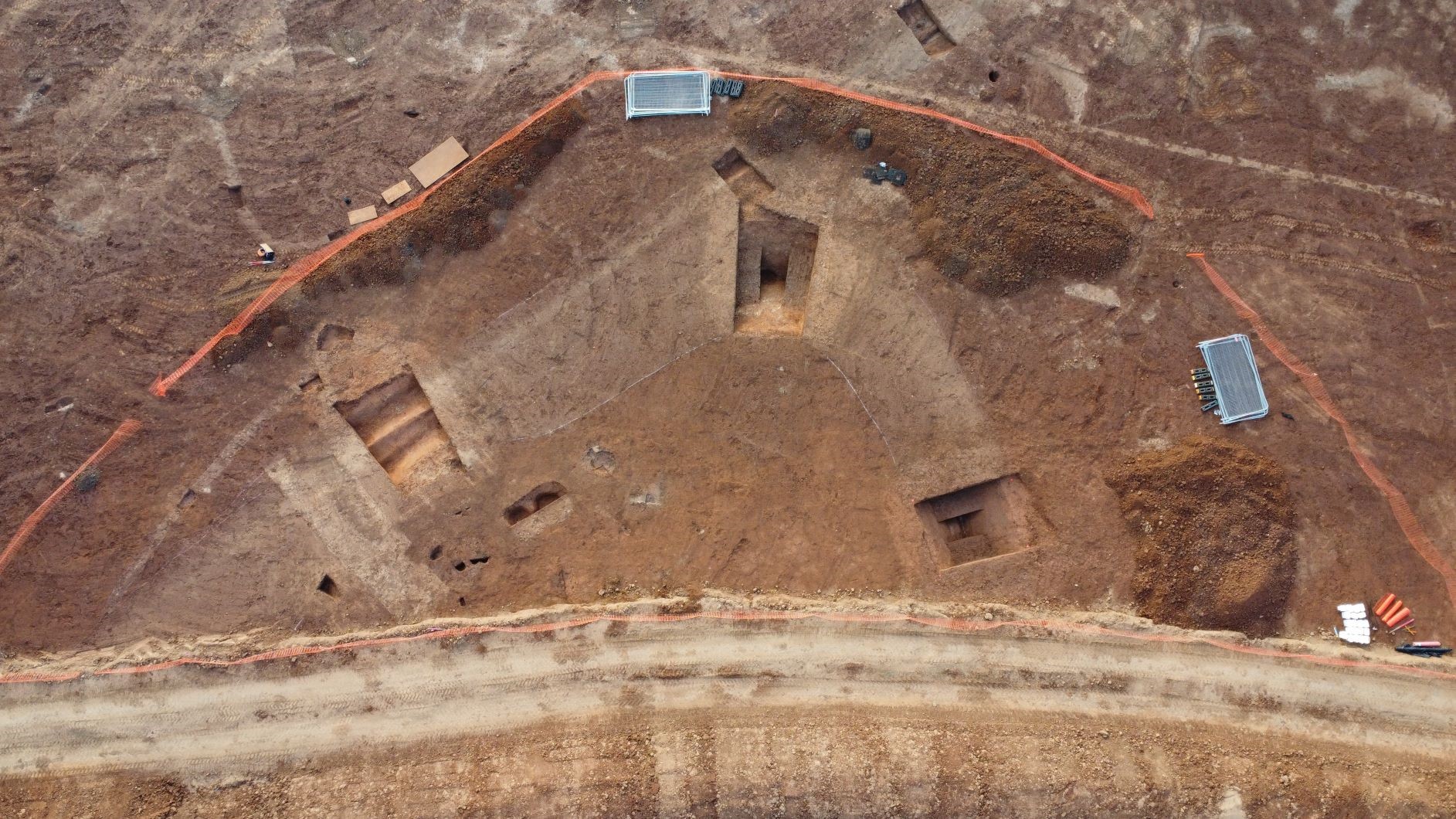
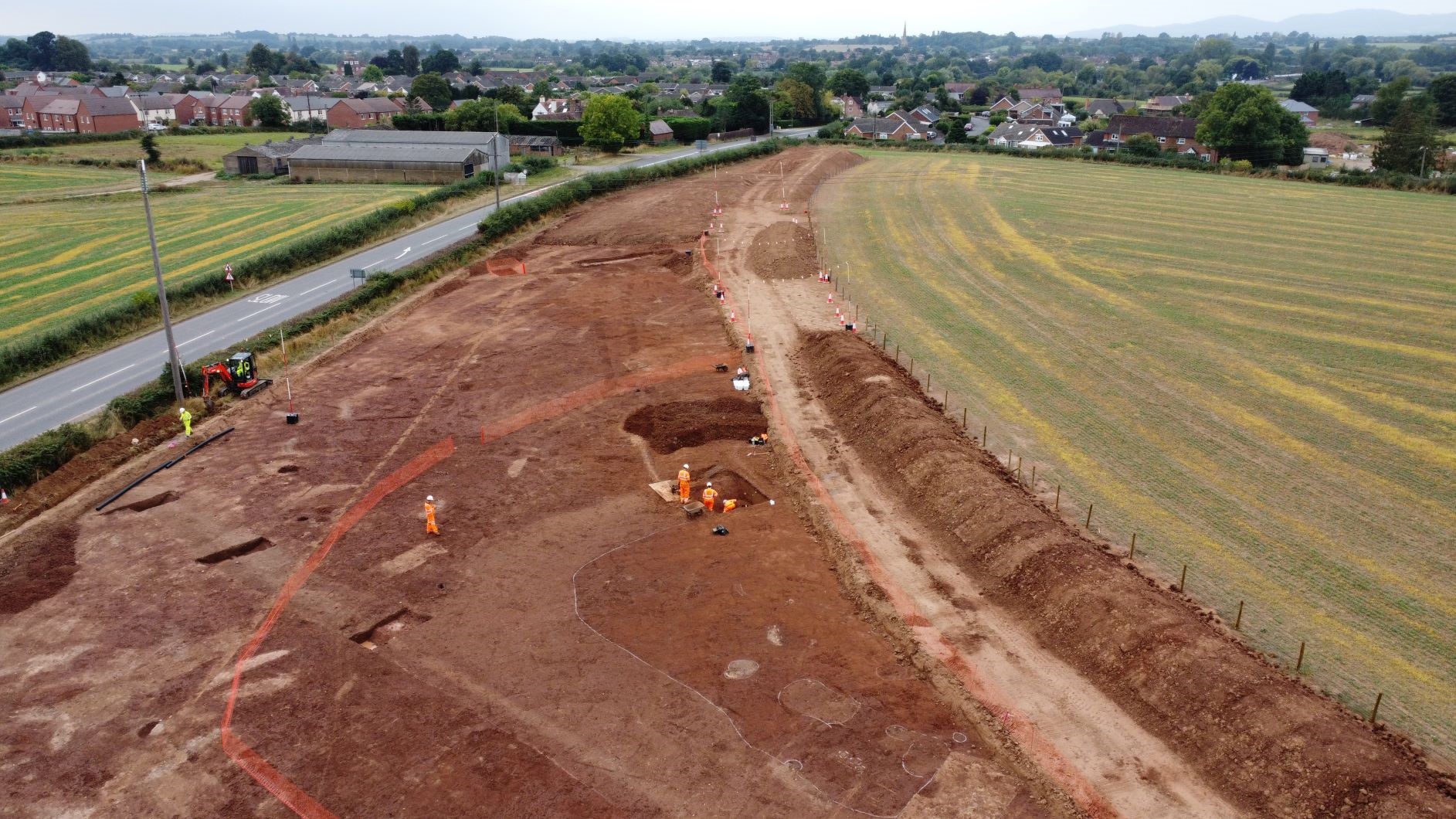
Post a Comment